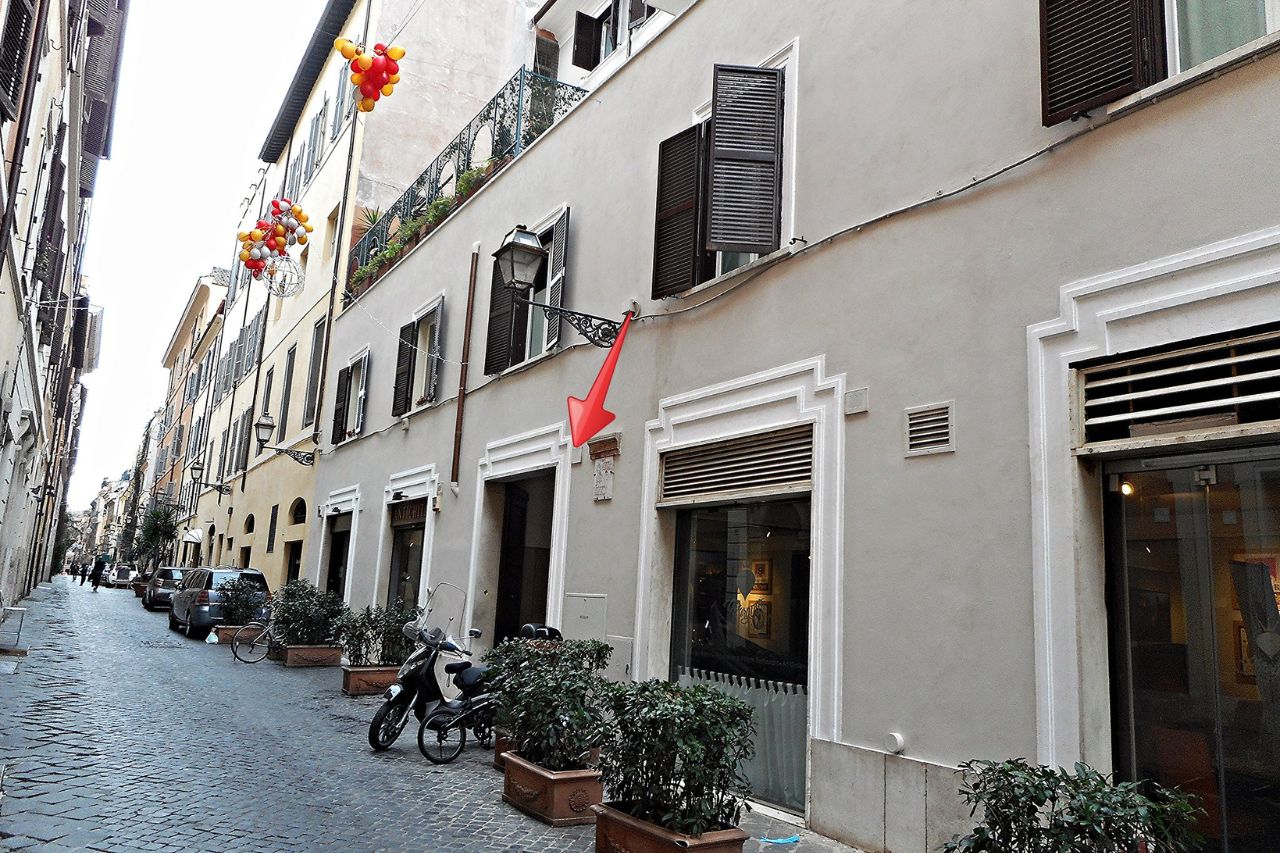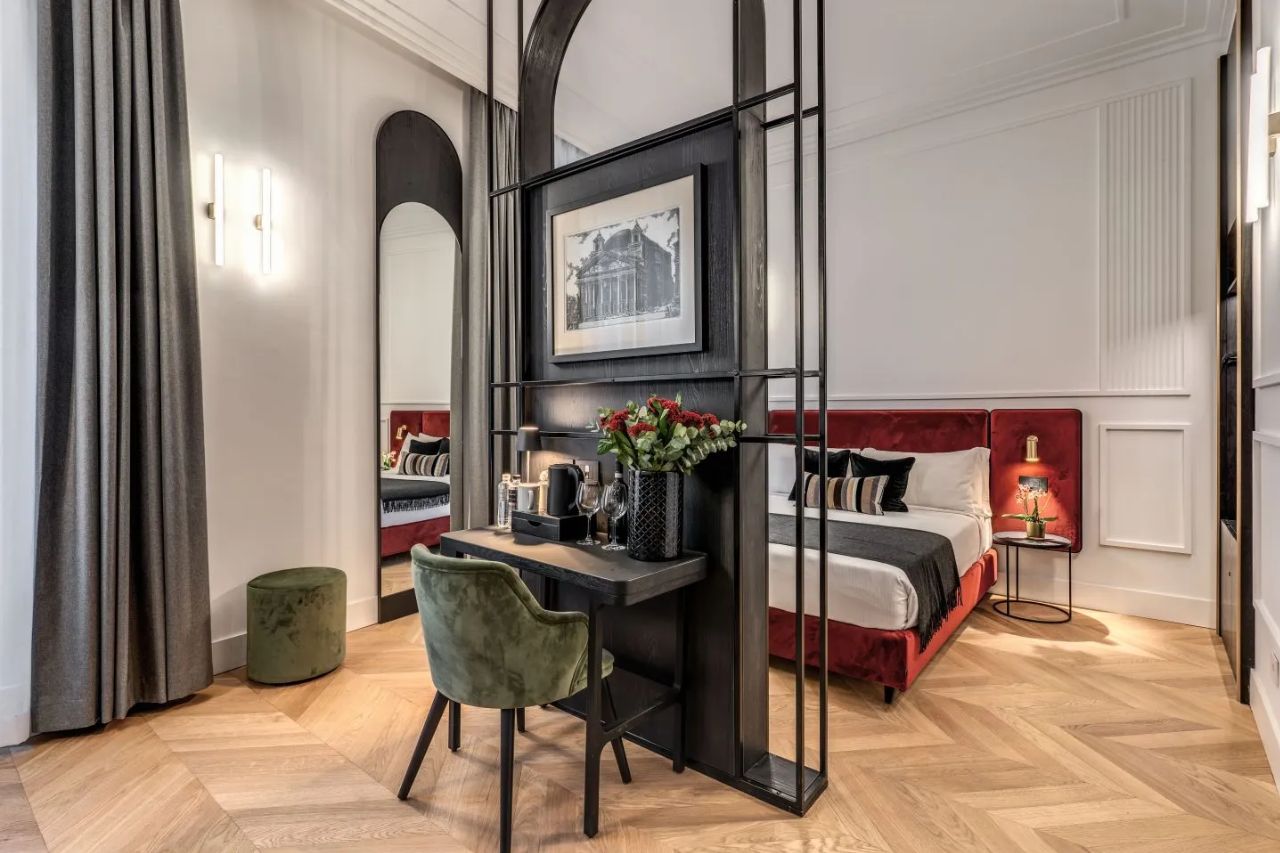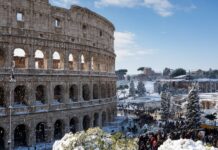In Italian, the name Piazza del Popolo translates to “People’s Square.” In medieval days, each piazza served a purpose, and while one might act as the political center, the other might serve as the religious base or as the beating economic heart. For centuries, this square became the monumental entrance with many attractions sitting next to the historical city gate.
Piazza del Popolo is a city square in Rome measuring 17,000 square meters. Giuseppe Valadier redesigned the square in the 19th century, which now makes it look like a large ellipse with the obelisk at the top. The piazza sits at the top of the three main streets of the historic center of Rome including Via del Corso, Via del Babuino, and Via di Ripetta.
Curious about the awesome sightseeing opportunities and the history of this fascinating piazza? Keep reading and discover where the obelisk came from and when it was transported to the piazza.
What is Piazza del Popolo?

This piazza is a large city square found in Rome and popular among tourists for its many attractions. Today, the piazza is a great gateway for reaching some of the most famous historic streets in all of Rome. Because of the many cafes, restaurants, shops, and hotels, the piazza always has large crowds.
History of Piazza del Popolo, Rome
Let’s take a quick look at the history of this piazza and why it makes sense to visit this popular tourist site.
Who Built It
The modern site as we know it today was constructed and designed by Giuseppe Valadier between 1811 and 1822. The original site was started in 1589 and designed by architect Domenico Fontana. This piazza became the site of many public executions with the last one taking place in 1869. Charles Dickens, the famous English writer of Oliver Twist, visited the square and witnessed an execution here on March 8, 1845.
When It was Built

It was originally completed in 1589 when Pope Sixtus V launched a plan in 1587 to develop Piazza del Popolo Rome. The obelisk (85.3 feet high) seen here was rescued and erected, but it is the second oldest obelisk in Rome.
Architecture and Design
Giuseppe Valadier designed the piazza in the neoclassical style with the redesigning requiring the removal of a modest fountain designed by Giacomo della Porta. Some insignificant buildings were also demolished in the effort. The ellipse showcases the balance and symmetry of Baroque architecture.
Read More: Piazza Venezia – 7 Things To Do On The Magical Square
What to See in Piazza del Popolo
Because they designed this piazza as an entrance to the city, it’s not surprising that you will find a lot to see here. Let’s take a look at what to see.
1. The Egyptian Obelisk

Found in the Flaminio Quarter of this piazza, they first consecrated it in Circus Maximus under Caesar Augustus. Romans at one time were so fascinated by obelisks that they, in fact, have more standing in Rome than those in Egypt with 13 in the Eternal City. The one in this piazza came from Heliopolis in 10 BC. Part of this potentially unhealthy Roman fascination with Egypt may be attributed to Cornelius Gallus, a minor politician, poet, and friend of Augustus, who may have made one of the most important contributions to Roman monumental architecture (discover the monuments in Rome here!) after spending some time in Egypt.
2. The Twin Churches

Curiously, two very similar churches stand next to each other: Santa Maria in Montesanto and Santa Maria dei Mircoli. Many call them twin churches due to the same external appearance. Still, they stand out as the most peculiar of the sights in Piazza del Popolo Rome.The two churches found along the southern edge of the piazza dominate your attention. Delve into the rich history of these twin churches, built in the 17th century, to appreciate the architectural harmony and religious significance that contributes to the unique character of Piazza del Popolo. As you explore the area, notice the intricate details of the church facades, showcasing the masterful craftsmanship that has withstood the test of time.
Related article: Temples in Rome – Secret Guide to 17 Ancient Roman Temples
3. Santa Maria del Popolo Church

Run by the Augustinian order, Santa Maria del Popolo Church had construction begin at the end of the 15th century and finished in the 16th century. For many art lovers, this site holds two artistic masterpieces by Caravaggio. First, you have the Crucifixion of St. Peter, and second, you can see the Conversion of St. Paul. The church’s rich history and architectural grandeur provide visitors with a profound spiritual and artistic experience, making it a must-visit destination for those exploring Rome’s cultural heritage.
4. Fountain of the Lions

Sitting at the base of the ancient Egyptian obelisk, you will see the Fountain of the Lions. This is not the original that Giacomo della Porta made, and this fountain takes the form of four mini fountains. Each of them displays a marble lion seated on a plinth. Additionally, the Fountain of the Lions serves as a captivating example of the fusion of Egyptian and Roman influences, offering a unique perspective on the historical connections between these civilizations.
5. Porta del Flaminia or Porta del Popolo

The city gate of the Aurelian Walls of Rome, this site marks the border of Piazzale Flaminio and Piazza del Popolo. This was once the site of an ancient Roman city gate built by Emperor Aureliian, and it belongs to one of the 18 Roman city gates. After the fifteenth century, Porta del Flaminia became more commonly called Porta del Popolo. Explore the area surrounding Porta del Popolo to uncover layers of history, from its ancient Roman origins to its role as a significant city gate during the Renaissance.
6. Fountain of Neptune

Considered one of the most famous fountains in Rome, the Fountain of Neptune was constructed in the 16th century by Giambologna. When Pope Pius IV learned of its—manliness—he ordered the genitals made slightly smaller. The fountain was built to symbolize the power and reign of Pope Pius IV—so that could explain some things from the original. As you marvel at the Fountain of Neptune, take note of the intricate details that reflect the political and artistic nuances of the Renaissance era.
7. Fountain of Dea Roma

Constructed between 1822 and 1823, Fountain of Dea Roma was made by Giovanni Ceccarini, but the original designs were, in fact, made by Giuseppe Valadier. This majestic statue in Rome depicts the goddess Roma and the two allegorical sculptures of the Aniene and the Tiber rivers. Explore the Fountain of Dea Roma to appreciate the harmonious blend of classical and neoclassical elements, showcasing the artistic evolution of Rome in the 19th century.
What to See around Piazza del Popolo
Now that we looked at what you can directly see in the piazza, let’s take a look at what you can see nearby. The piazza is close to many incredible tourist sites for sightseeing.
8. Piazza di Spagna and the Spanish Steps

Constructed in the Rococo style from 1723 to 1726, the Spanish Steps lead the way up to Piazza di Spagna. The site totals 135 steps and the romantic English poet John Keats died in his house beside the Spanish Steps in 1825 from tuberculosis. Sitting at the bottom of the Spanish Steps is a traditional English tea shop established in 1893, where you can indulge in a delightful break and soak in the timeless atmosphere of the surroundings. Explore the vibrant Piazza di Spagna, surrounded by designer boutiques and lively cafes, adding a modern flair to this historic location.
9. Villa Borghese

Located near Piazza del Popolo, Villa Borghese holds spectacular collections of Caravaggio and Bernini, but it holds other artworks like those from Titian and Raphael. You can also visit this site to see ancient Roman art, the park, and the gallery. You can see three museums free of charge at Villa Borghese that include Casa del Cinema, Museo Bilotto, and Museo Canonica. They also have the National Gallery of Modern art nearby, which is one of the hidden gems in Rome.
10. Pincio Terrace Viewpoint

Once you reach the top, you will see stunning views overlooking the historic center of Rome, including St Peter’s Basilica, Piazza del Popolo, and the skyline of Rome. Pincio Terrace Viewpoint ranks as one of the most beautiful viewpoints at Villa Borghese. You can access it for free (see free things to do in Rome!), and it especially sets a good memory to be here around sunset. Many locals love to come here for a peaceful stroll. Additionally, the vibrant colors of the sky during sunset create a breathtaking backdrop, making it an ideal spot for photography enthusiasts to capture the beauty of Rome.
11. Villa Medici

Offering sculpture-filled gardens, the Villa Medici palace was constructed in the late 1400s. Anyone interested in Renaissance-style villas should come for a visit. UNESCO recognized it in 2013 as a unique heritage site. The park feels a bit like a labyrinth full of interesting mysteries always waiting for your discovery. As you wander through the meticulously maintained gardens, you’ll find hidden corners adorned with sculptures that unveil the rich history and artistic legacy of Villa Medici.
12. Ara Pacis and Mausoleum di Augustus

Originally created by Augustus in 28 BCE, they reconstructed Ara Pacis in 1938 as a splendid monument dedicated to Caesar Augustus. They meant it to symbolize the peace and prosperity that Augustus brought to Rome. The Mausoleum di Augustus, located nearby, adds to the historical significance, providing visitors with a glimpse into the grandeur of ancient Roman architecture. Explore the area to fully appreciate the cultural and historical richness it offers.
13. Via Margutta

Many come to Via Margutta today for the fashionable restaurants and art galleries found here (see art in Rome here!), but in the past, Via Margutta was the home of modest craftsmen and workshops. Some celebrities like Federico Felini, the film director, lived here. As you stroll down this charming street, take a moment to appreciate the preserved authenticity of the cobblestone pathways and ivy-covered facades, transporting you back to a bygone era. Explore the art studios and boutiques that continue to contribute to the street’s creative legacy
14. Leonardo da Vinci Museum
Showcasing over 50 working inventions of Da Vinci, the Leonardo da Vinci Museum is one of three museums in Rome. However, the one located at Basilica Santa Maria in Piazza del Popolo is considered the best in all of Rome. This interactive museum showcases some of Da Vinci’s movable creations. Children may appreciate this museum more than adults, so if you come to Rome with family, check it out.
15. Sala del Bramante – Galleria Agostiniana
Having an international exhibition of over 100 nativity scenes, Sala del Bramante – Galleria Agostiniana attracts artists from all over the world to showcase individual nativity scene sets. The coordinators of the event arrange the nativity scenes from smallest to largest, and they consist of many materials including coral, crystal, pasta, wood, paper cups, ceramic, fabric, and chocolate. This Christmas attraction runs from November to January from 9:30 am to 8:30 pm.
Where is Piazza del Popolo and How to Get There
One of the easiest ways to visit is using public transportation. You can either hop on a metro or a train to arrive there without the high cost of a taxi. Taking the train, you will want to head to the closest train station to the piazza called Flaminio. For those already getting off at Rome Termini train station, you only have an eight-minute ride to Flaminio (see day trips from Rome by Train here!).
Because Flaminio belongs to the Stop A Line A service, most of the other train stations near other attractions can take you to Flaminio Station. For example, you can get here from the Colosseum by taking the Metro to Termini. Then hop on the Line A service to head toward Battistini. You can, in fact, use this to your advantage to see multiple attractions at once. Near the Colosseum Metro is also the Capitoline Museums on Capitoline Hill.
Hotels Near Piazza del Popolo
Once you arrive here, you may wonder about hotels near Piazza del Popolo,you may wonder where you can stay for the night. The neighborhood has some attractive accommodations worth checking out that would include:
Hotel Valadier

Surrounded by boutiques less than 656 feet from the hotel, Hotel Valadier has three restaurants, a rooftop terrace, and a fitness center. You can see some spectacular panoramic views of Rome from the rooftop terrace. The wine cellar at Hotel Valadier stocks over 400 wine labels for wine tasting in Rome.
Residenza Piranese by Tree Charm

Found in the Spagna District of Rome, Residenza Piranese by Tree Charm sits near many popular areas of interest including Piazza di Spagna and Quirinale Palace. You also only sit a 7-minute walk from Via Condotti, one of the most famous streets in all of Rome for being the fashion center of the Eternal City.
Spagna Secret Rooms

One of the hotels near Piazza del Popolo and resting 328 feet from Via Condotti, the Spagna Secret Rooms have a special interest to couples (see the other romantic things to do in Rome!). It’s a cozy environment with many restaurants and sightseeing opportunities in the area.
Related article: What to Wear in Rome – Where Fashion Meets History
FAQs About Piazza del Popolo, Rome
Let’s take a look at the most frequently asked questions about the piazza and what you can expect when here. Here are some of the most commonly asked questions.
Is Piazza del Popolo Worth Seeing?
Only a 10-minute walk from Piazza Spagna and considered the largest piazza in all of Rome, Piazza del Popolo is worth the visit for the many remarkable sights in the area from the Egyptian obelisk to the Fountain of Neptune.
Are There Restaurants in Piazza del Popolo?
You can find many places to eat in the piazza, including some restaurants for vegetarians. The best food to eat here is the pizza, but you can also find elegant dining options.
How Far is Piazza del Popolo from the Spanish Steps?
It only takes 10 minutes of walking (approximately 1.6 miles) to get from Piazza del Popolo to the Spanish Steps. From Piazza del Popolo, you make your way to Via del Corso. This street runs through the historical center of the city making for a delightful walk. Just continue on that road until you arrive at the Spanish Steps.
How Long from Piazza del Popolo to Trevi Fountain?
It’s a 1.8-mile walk from Piazza del Popolo to the Trevi Fountain. You can typically arrive there in 16 minutes of walking, but you could also ride the tram, which only costs €2.
















![Piazza-del-Popolo[1] Piazza del Popolo](https://italytravelsecrets.com/wp-content/uploads/2024/01/Piazza-del-Popolo1-1068x542.jpg)





